Contents
- Why Do You Translate Your Directory?
- What is Poedit?
- Some Core Features Of Poedit
- How to Setup Poedit (Step by Step) (Both theme and plugin)
- Frequent Asked Question
- Can I use Poedit for plugins and themes?
- Will my translation disappear after plugin or theme update?
- Can Poedit auto-translate content?
- How is Poedit different from Loco Translate?
- Why doesn't my translation show up?
- Why are some of my strings missing from the .pot file?
- Why do my translations disappear after updates?
- Final Words
How to Translate Directory Theme And Plugin with Poedit (Step-by-Step)
Are your global users left confused when they visit your directory site? If your directory plugin still shows English strings, you’re likely losing non-English visitors—plus, details like “Search for…” or “Near” remain untranslated, breaking user experience.
Every non-English-speaking user bouncing off your page is a missed opportunity. These missed opportunities compound over time. Users that feel confused will not engage, will not convert, and will not come back. You might have installed a multilingual plugin, but your directory plugin strings remain untranslated, breaking user experience.
Enter Poedit — a powerful, free tool that helps you translate your theme strings offline with complete control and zero code. In this tutorial, we’ll walk you through how to translate directory theme and plugin with Poedit (step-by-step) (like Directorist) the right way.
Why Do You Translate Your Directory?
Directory websites serve a wide range of audience. For good understanding it is very important to present the website in the local language. Especially in today’s global, multilingual digital landscape. Here’s why:
1. Reach a Wider, Global Audience
A directory website typically serves as a centralized platform for listing businesses, services, or individuals. Without translation, you are narrowing your potential audience to a single language group. Offering translate your theme and plugin, you can maximize multilingual support by serving international visitors. Enable local users to explore global listings
2. Boost Local SEO & Multilingual Rankings
Search engines index content by language and region. A multilingual directory site allows you to rank for location-based keywords in multiple languages. This outcome results in higher traffic, more clicks, and better visibility in search across multiple markets.
3. Enhance User Experience and Engagement
If users can navigate and consume content in their preferred language, their chances of staying on your site longer and converting increase dramatically. Multilingual interfaces show your audience that you care about their comfort and accessibility. This reduces bounce rates and improves time-on-site,
4. Increase Listings and User Submissions
When business owners can add listings in their native language, they’re more likely to contribute to your directory. Multilingual front-end forms improve submissions. Especially for community-based directories or B2B platforms, language flexibility is a growth factor.
5. Higher Conversion Rates & ROI
Multilingual websites have been shown to generate significantly higher conversion rates. Why?
Visitors understand your CTAs. People tend to trust and respond better when spoken to in their own language. Your directory site becomes not just functional, but profitable.
6. Edge Over Competitors
Most directory websites are still single-language, especially in niche markets. Going multilingual makes your site stand out. Attracts a more diverse audience than your competitors.
7. Monetization Becomes Easier
If your site supports multiple languages, you can sell premium listings to businesses in other countries.It unlocks new monetization streams by removing language limits.
8. Future-Proofs Your Business
The web is becoming increasingly multilingual. A translated WordPress directory keeps you ahead of trends. Prepares you for AI search, which favors multilingual, context-rich content.
Translating your wordPress directory website isn’t just a “nice to have”—it’s a strategic advantage. It fuels growth, improves visibility, and enhances the overall experience for your users and business partners.
Read More: How to Create WordPress Multi Language Directory Website (No Coding Needed)
What is Poedit?
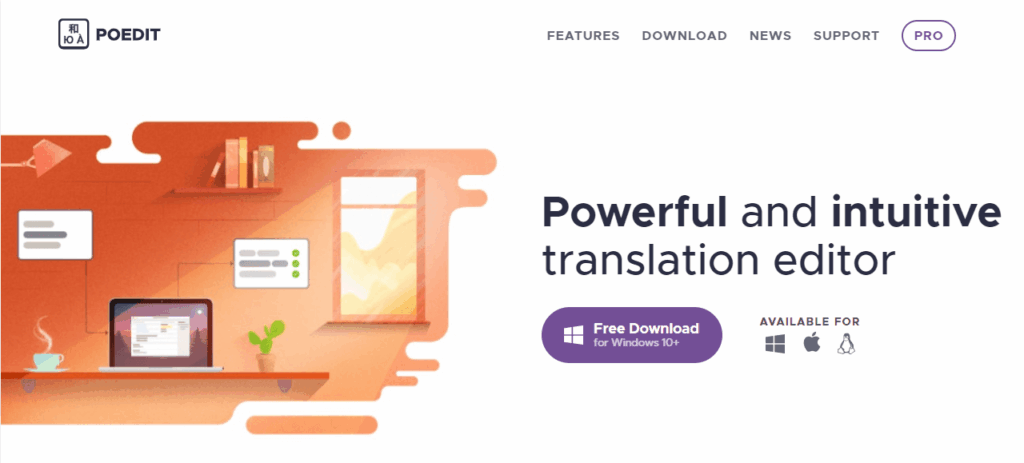
Poedit is a popular cross-platform translation editor designed specifically for translating software interfaces and websites—especially those using the Gettext localization system, like WordPress themes and plugins.
It provides a simple and efficient interface to manage .po (Portable Object) and .mo (Machine Object) files—two essential file types used to localize WordPress content.
In Simple Terms, Poedit helps you translate your theme and plugins manually, without needing to touch the code or install any bulky plugins. It’s especially useful when you’re Building multilingual WordPress sites, Translating directory listings and interface strings, Customizing text that’s hardcoded in your theme or plugin files.
Some Core Features Of Poedit
Poedit stands out as a powerful yet lightweight translation editor tailored for developers, translators, and WordPress users. It simplifies the process of translating while offering advanced features like translation memory, machine translation support, and quality checks. Whether you’re translate your theme or full WordPress directory site, Poedit equips you with all the essential tools for efficient and accurate translations. According to the official Poedit website, here are some standout features:
1. User-Friendly Interface
Poedit provides a simple, user-friendly design that reduces distractions. Its simple split-view design allows you to easily view source text and enter your translations without any coding knowledge. This is perfect for both newcomers and experts.
2. Translation Memory
The built-in translation memory keeps track of and recommends translations you have previously used as you continue your work. This not only speeds up the process but also ensures consistency across your site, especially helpful when translating repetitive strings in large projects.
3. Built-in Machine Translation
Poedit integrates with top machine translation services like DeepL, Google Translate, and Microsoft Translator. With just a click, you can generate instant, high-quality translations and refine them to suit your brand or tone.
4. Translation Validation
To help avoid errors, Poedit automatically validates your translations. It alerts you if anything critical is missing, like a placeholder or a variable, ensuring that your translated content won’t break the functionality of your theme or plugin.
5. WordPress Compatibility
Poedit is built with WordPress in mind. It works seamlessly with .pot, .po, and .mo files commonly used in WordPress themes and plugins, allowing you to extract and translate strings with precision.
6. Pro Features (in Poedit Pro)
The Pro version of Poedit offers advanced capabilities such as automatic pre-translation of entire files, direct syncing with WordPress projects, and access to shared translation memory. These features are perfect for freelancers, agencies, and developers managing multiple multilingual sites.
How to Setup Poedit (Step by Step) (Both theme and plugin)
Here’s a step-by-step guide on how to set up Poedit to translate the Directorist wordPress directory plugin and its theme manually using .pot, .po, and .mo files. This method gives you full control over translate your theme and plugin—ideal for performance and accuracy.
This tutorial covers both the Directorist plugin and any compatible theme that comes with it.
Prerequisites:
· Directorist plugin installed on your WordPress site
· A Directorist-compatible theme (like OneListing or dPlace)
· Poedit installed on your computer
Translate the Directorist Plugin Using Poedit
Step 1: Download and Install Poedit,
Go to https://poedit.net/ Download and install Poedit (Free version is sufficient for basic translation).

Step 2: Locate the Directorist Language File (.pot)
The .pot (Portable Object Template) file contains all the translatable strings. You can find it at: wp-content/plugins/directorist/languages/directorist.pot
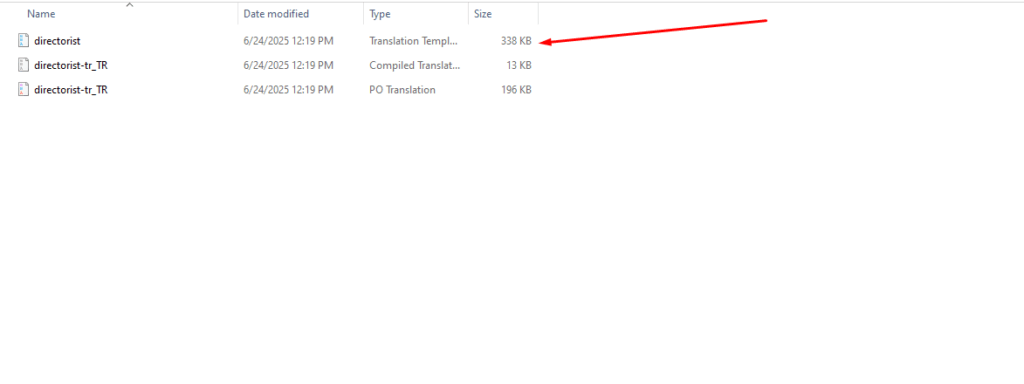
Step 3: Create a New Translation in Poedit
Open Poedit Go to File → New from POT/PO file Select directorist.pot file Choose the language you want to translate to (e.g., Bengali or French) Poedit will create a .po and .mo file named like: directorist-fr.po and directorist-fr.mo (for French)
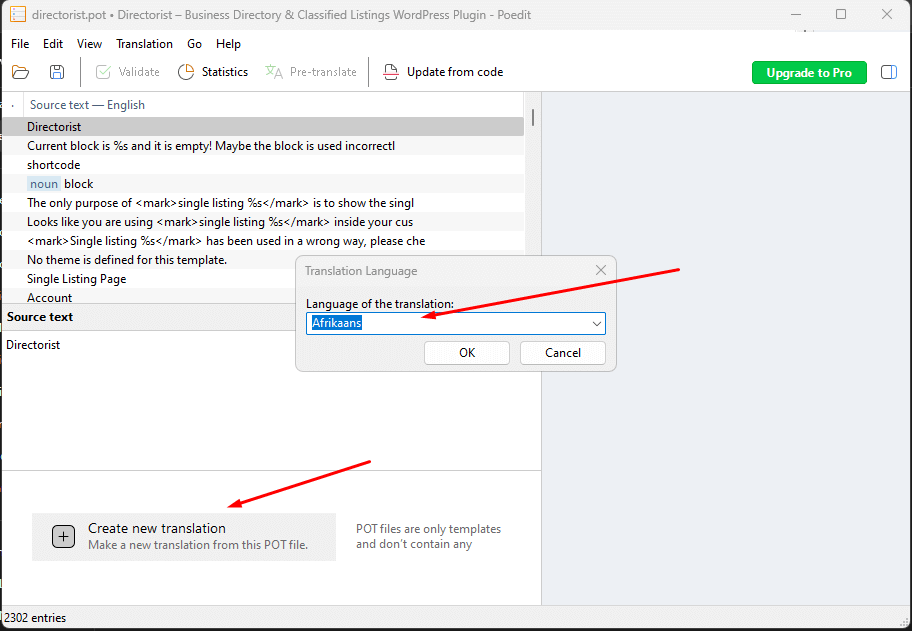
Step 4: Translate Strings
Poedit will show a list of all the translatable strings. Click each string and enter the translated version in your language. Save your work frequently.
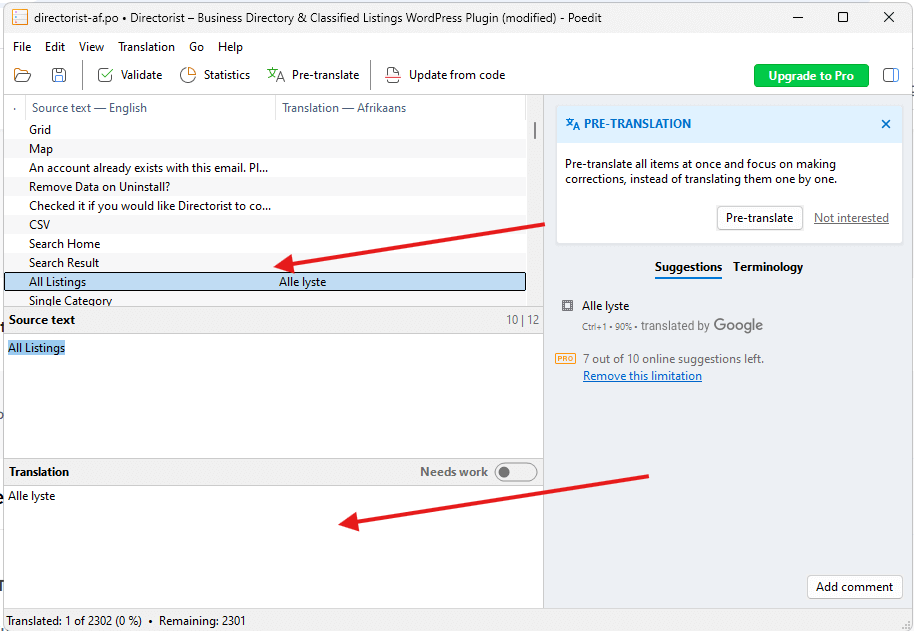
Step 5: Save and Name Files Properly,
Poedit will automatically save translations in the correct format. Make sure the filename follows this format: directorist-<locale>.po directorist-<locale>.mo Examples: Bengali (Bangladesh): directorist-bn_BD.mo French (France): directorist-fr_FR.mo
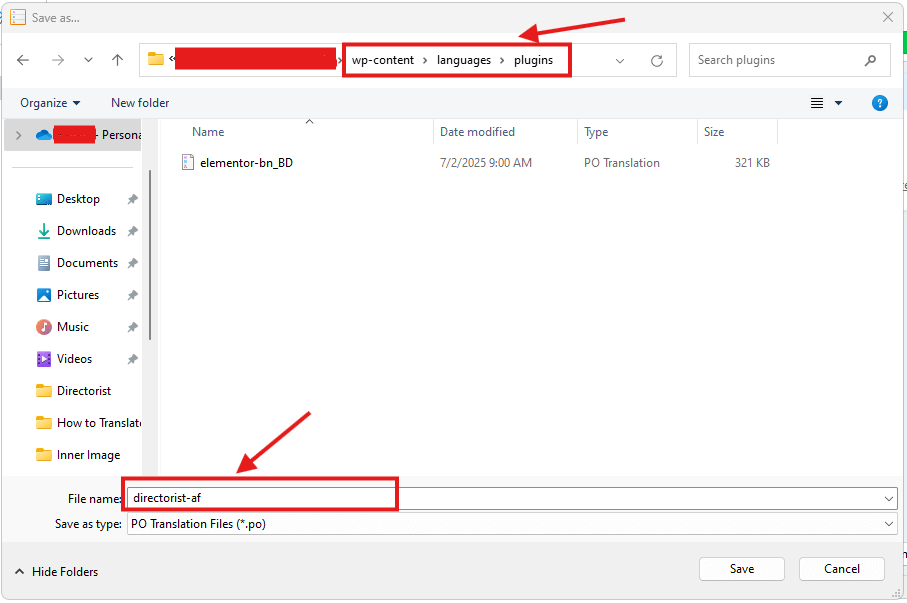
Step 6: Upload the Files
Upload the .po and .mo files to: wp-content/languages/plugins/
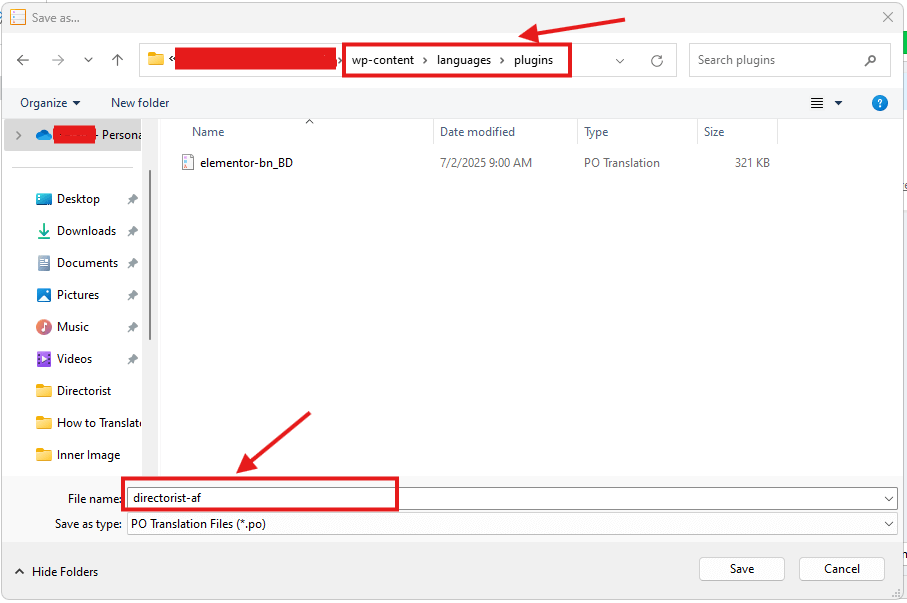
Step 7: Set Site Language in WordPress
Go to Dashboard → Settings → General Change Site Language to your desired language (e.g., Bengali or French) WordPress will now load your .mo translation for the Directorist plugin.
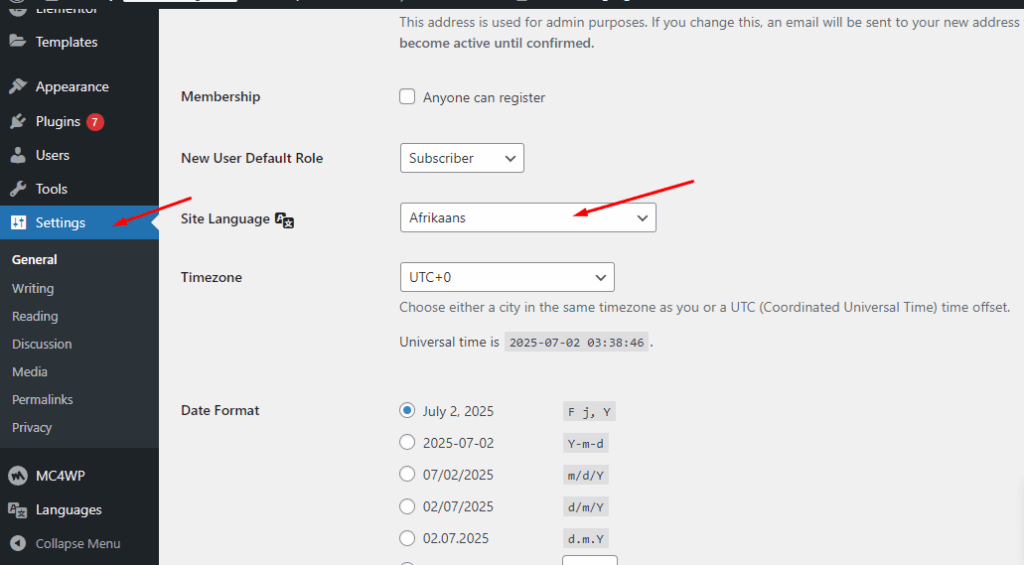
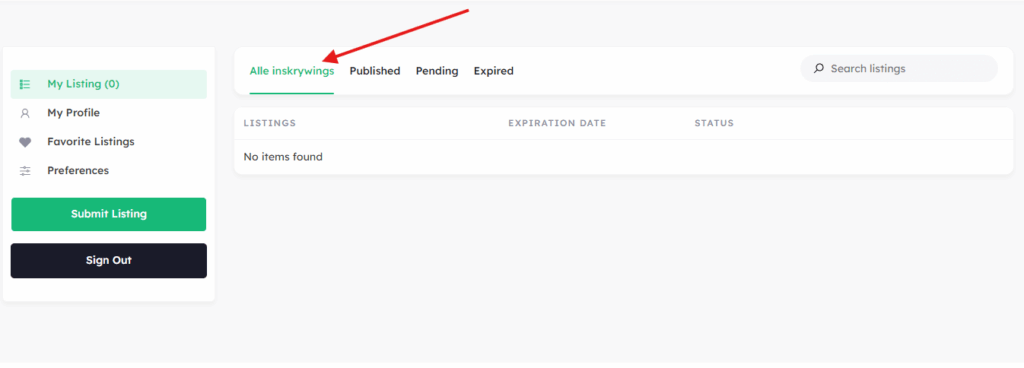
Translate the Directorist Theme Using Poedit
The process of translating the directorist theme using Poedit is the same as the translating plugin. You have to just access the specific folder of theme languages. The other process remains the same.
Step 1: Locate the Theme Language Files
Go to: wp-content/themes/your-theme-name/languages/
Look for a .pot file (e.g., onelisting.pot).
Step 2: Create and Translate Like the Plugin
Open the .pot file with Poedit.
Choose your language and translate strings.
Save as your theme name like onelisting-fr.po and onelisting-fr.mo
Step 3: Save to the Right Location
To prevent losing your translations during theme updates:
Save the .po and .mo files to: wp-content/languages/themes/
Or use a child theme and store translations inside the languages folder there.
Bonus Tips
Always back up your .po files so you can recompile .mo files if needed.
Keep Poedit updated for the latest compatibility.
Enable “Update from Source” in Poedit to sync with new theme/plugin versions.
For better collaboration, use Poedit Pro with cloud sync or team sharing.
You’re Done!
Once you’ve followed these steps, your Directorist plugin and theme should be fully translated in your desired language—without using any additional translation plugins.
Frequent Asked Question
Can I use Poedit for plugins and themes?
Yes, Poedit supports both plugins and themes with .pot files.
Will my translation disappear after plugin or theme update?
There is a chance of missing translation files while updating the plugin or theme update. For keeping safe, you save it in wp-content/languages/plugins/
Can Poedit auto-translate content?
Only in the Pro version using machine translation support. If you need auto translation feature, you have to purchase it.
How is Poedit different from Loco Translate?
Poedit is a desktop app with full control, QA, and memory. Loco Translate is a WordPress plugin that works within your dashboard but lacks Poedit’s pro-grade features.
Why doesn’t my translation show up?
Confirm file naming: pluginname-locale.po/mo (e.g., directorist-es_ES.mo)
Double-check the language is active in WP settings
Ensure .mo file is saved in wp-content/languages/plugins/
Why are some of my strings missing from the .pot file?
The plugin might not be using translatable functions (__() or _e())
Check for dynamically generated content
Why do my translations disappear after updates?
This happens when files are saved in the plugin directory
Always use the system language directory: wp-content/languages/plugins/
This will save your translations file even after updates.
Final Words
Poedit is one of the most efficient tools for translating WordPress directory plugins like Directorist. It’s fast, gives you control, and doesn’t slow down your site. Once you master it, you can localize any plugin with precision.
If you’re managing multilingual directory sites, Poedit should be your go-to—especially with its translation memory and error checking features.
Have questions? Drop them in our community and follow us to get more multilingual tips and tricks.

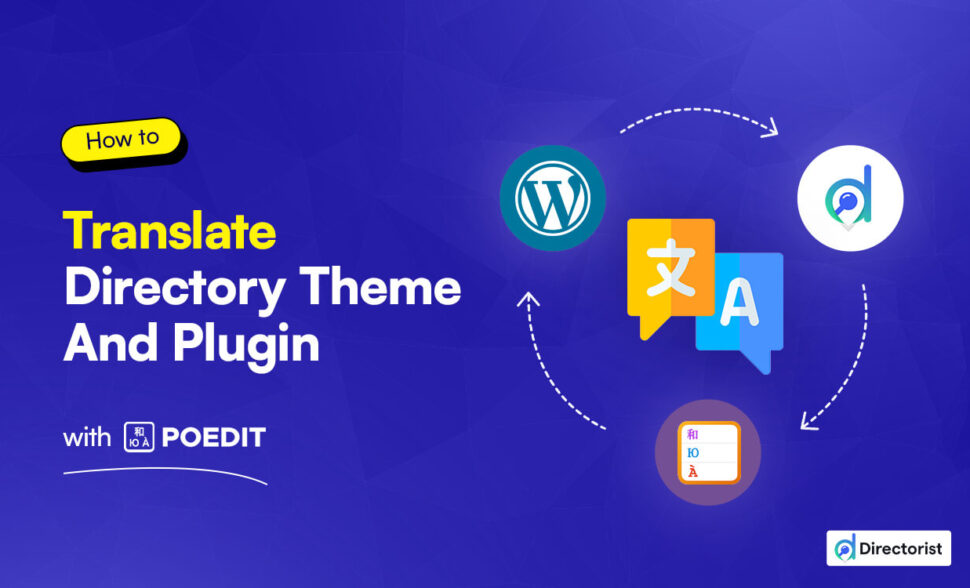


Leave a Reply
You must be logged in to post a comment.